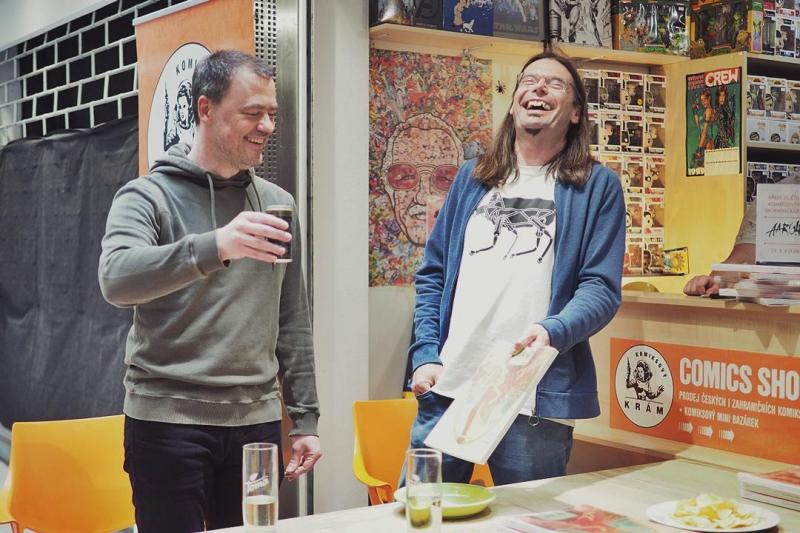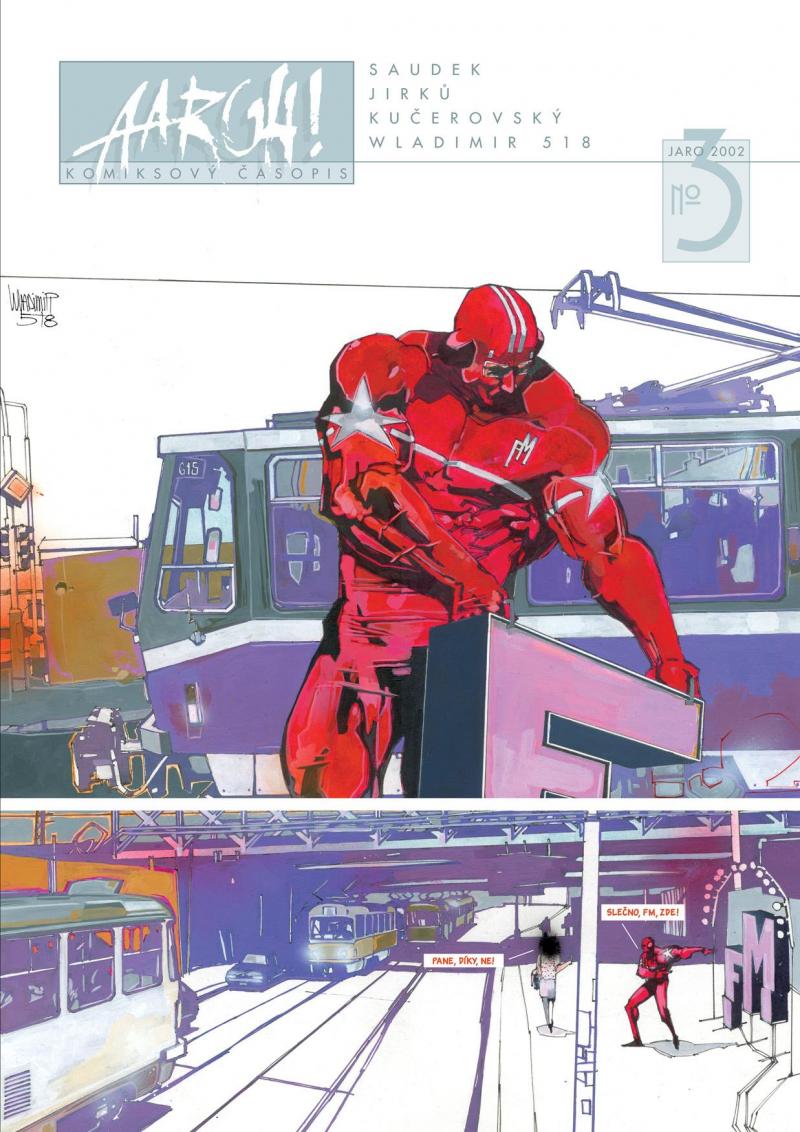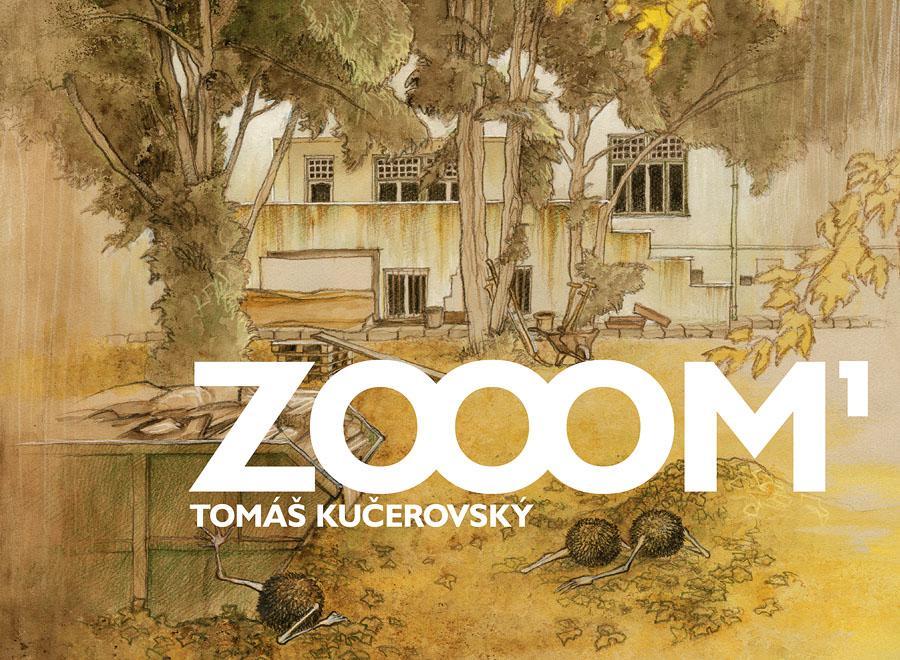People
When architects start publishing a comic book magazine. The story of a renowned anthology that will soon celebrate a quarter of a century

In 2000, two classmates from the Faculty of Architecture at the BUT (Brno University of Technology) started publishing their own comics magazine Aargh! Tomáš Prokůpek and Tomáš Kučerovský did not even mark the first issue as number one, because they said they had no idea whether the second issue would ever be published. Eventually, however, their leisure project became a renowned publication containing also professional texts, which has been on the market for almost a quarter of a century. For Tomáš Prokůpek, comics has also become a life theme, to which he has strayed from architecture.
According to Tomáš Prokůpek, there are quite a lot of fans of comics among architects. It was not so surprising when he found out that another cartoon enthusiast –Tomáš Kučerovský – was in the same year as him. “We became friends and initially planned to make comics together. Tomáš is a much better draughtsman than I am, and I have always been more drawn to creating stories,” says Tomáš Prokůpek. So he wrote several scripts. “Tomáš started working on them, but he was very slow. And to keep ourselves busy in the meantime, we switched to plan B, which was to create our own comic magazine,” Prokůpek recalls with a smile.
In 1998, when they started talking about this idea, Prokůpek said Czech comics were in a big decline and authors, including them, had nowhere to publish. “There was no platform. But we had contacts in Poland, where pop culture worked differently. At that time there were already big comic festivals and comic fanzines. That inspired us,” he says. And so they set about planning the magazine, even though they knew nothing about publishing it.

From an idea of two friends to a comprehensive anthology
After two years of preparation, the first issue was published in 2000. “We had no idea if there would be any response. We didn't even dare to put No. 1 on the first book because we knew a lot of stories of magazines that ended after the first issue,” Prokůpek says. But the response was positive and the total print run of 300 sold out quite quickly. “So we continued with it, put together a second issue and it started to pile up,” says Tomáš Prokůpek, describing the beginnings of the magazine, which is now in its twenty-third year.
Today it has almost two hundred pages and Tomáš Prokůpek and Tomáš Kučerovský call it more of a anthology. It is published once a year and is usually partly dedicated to a country. “Gradually, we began to crystallize permanent columns. For example, we systematically focus on the history of Czech comics. At the same time, the idea of focusing more on one country in each issue was also born. Usually we have a profile text about the country, comics by local authors, and maybe even an interview,” Prokůpek says, adding that initially they focused mainly on Central and Eastern Europe. But now they are venturing further afield, for example to Asia. “At the same time, we publish very experimental things as well as works that fall into the intelligent mainstream. As readers and editors, we enjoy the diversity of the anthology,” he adds.
Japanese manga has brought more female authors to comics
He also notes that he is pleased with the long-term functioning of the magazine. “One of the problems of Czech comics is the constant breaking of continuity. Apart from the magazine Čtyřlístek, which has been around since 1969, there is no project that has been operating for more than five or six years. In my opinion, the fact that Aargh! has been successful for so long is beneficial, among other things, in preserving continuity,” he says, adding with a smile: “He is already observing a generational change. It's a bit scary that today we publish authors who were born when Aargh! was already published. We are a generation of fathers, and thanks to our contact with the youngest generation of authors, we realize that comics is something completely different for them than it is for us.”

While comics were something mysterious for him growing up and were shrouded in the magic of forbidden fruit, for today's young writers they are a natural part of the culture they grew up with. “I first encountered comics in the 1980s. It was hard to find, it was impossible to find out what was coming out in the West. Today, interested parties can get to everything easily. They have a lot of inspiration from abroad. There is often a strong influence of Japanese manga in their work. And it is very interesting that in the youngest generation we have more female authors than male authors. Previously, a female comic book writer was something very special. Thanks to manga and its wide range of topics, comics have appealed to more girls and women,” says Tomáš Prokůpek, describing the changes in the comics scene.
Although politics is not something they actively comment on, Prokůpek says events in the Czech Republic and abroad are often reflected in the work of authors. “For example, it was impossible not to react to Russia's invasion of Ukraine. We have a lot of friends and contacts in both countries, so we follow what is happening through the specific stories of local authors, whom we often know personally,” he points out.
From Architecture to Comics Curation
What seemed to be only an interesting hobby at university eventually became a lifelong mission for Tomáš Prokůpek. Although a trained architect, he thinks that his greatest contribution to Czech architecture is that he has never designed. “For a while after school I joined the architectural magazine ERA21, where I worked as an editor, which was very useful for me because I learned to do many things related to publishing professionally,” says Prokůpek. He then moved into academia, where he worked for nearly ten years. He has participated in several grant projects on the history of Czechoslovak comics.
Today he works at the Moravian Museum in Brno in the Department of Literary History as a curator focusing on Central and Eastern European comics and an expert on Czechoslovak illustration from the 19th to the 21st century. “I still enjoy it. Now I'm doing a book about Arthur Scheiner, who is an illustrator who lived from 1863 to 1938. He's such an underappreciated figure. Otherwise, we are slowly planning some things for the twenty-fifth anniversary of the magazine. I still have a million plans, which on the one hand is a disadvantage. On the other hand, something always works out in the end. But our main goal is to endure and continue publishing Aargh!,” concludes Tomáš Prokůpek.
(zeh)